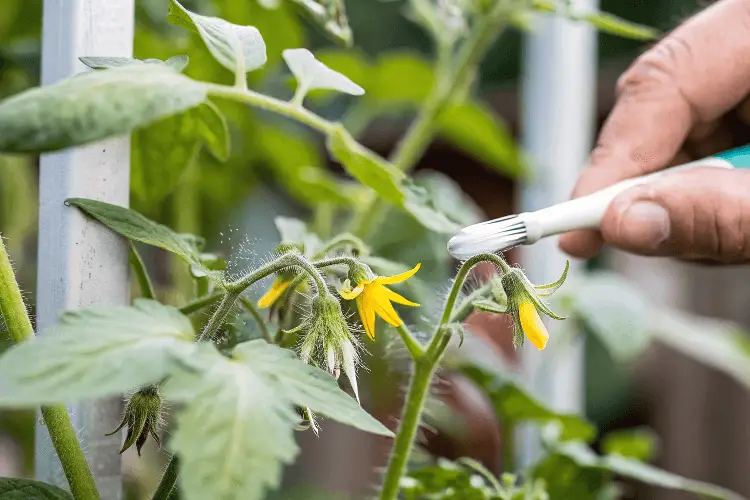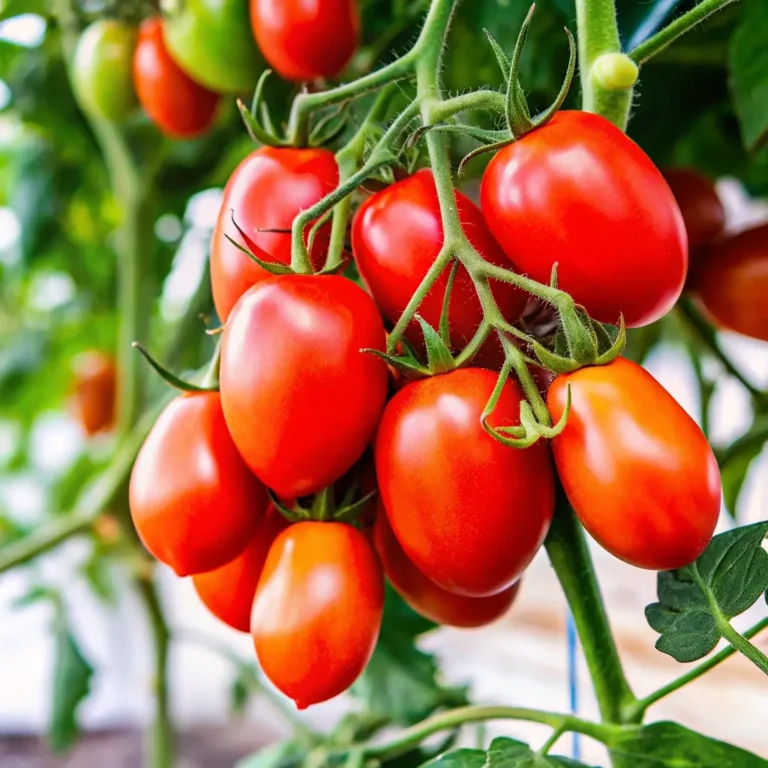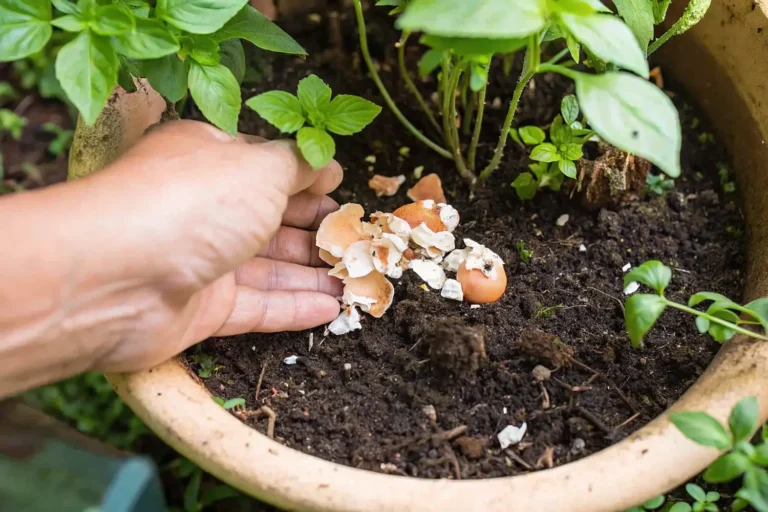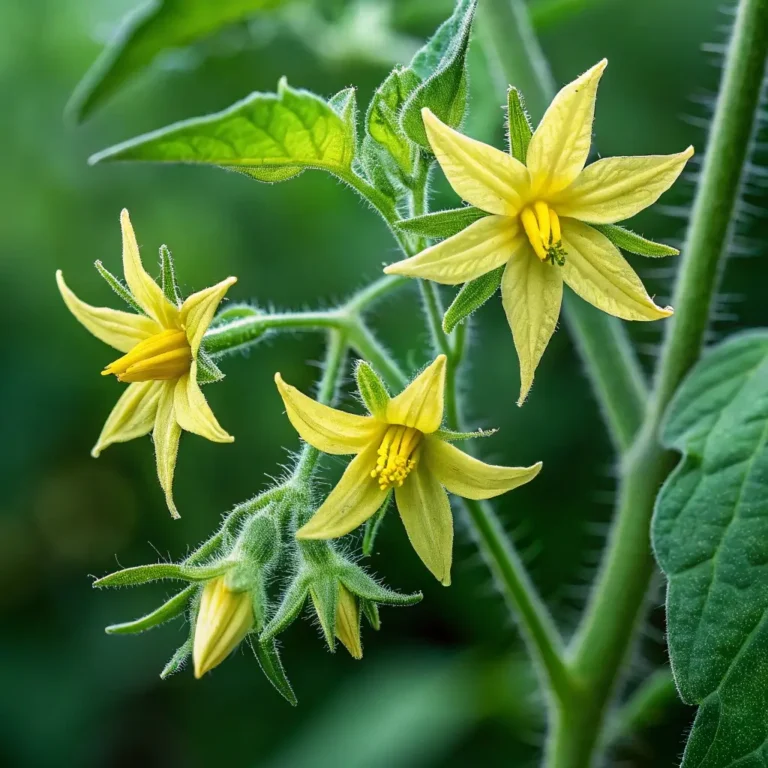How To Hand Pollinate Tomatoes(When& Why Should You Use): 5 Tips
Table of Contents
Introduction
Did you know that nearly 30% of home gardeners experience poor tomato yields due to inadequate pollination, despite providing optimal growing conditions? This surprising statistic highlights a critical yet often overlooked aspect of tomato cultivation. While tomatoes are self-pollinating plants, environmental factors like extreme temperatures, high humidity, or a lack of natural pollinators can significantly impact fruit production. Learning how to hand pollinate tomatoes can be the game-changing skill that transforms your garden’s productivity. This simple technique mimics nature’s process and ensures your plants produce the abundant harvest you’ve been working toward.
What You’ll Need
To successfully hand pollinate your tomato plants, gather these simple tools:
- A small, clean artist’s brush or makeup brush (a soft-bristled brush works best)
- An electric toothbrush (optional but highly effective)
- Q-tips or cotton swabs (as an alternative to brushes)
- A tuning fork (another alternative vibration method)
- Clean, dry hands (sometimes all you need!)
Substitution Tip: No brush available? A clean feather, small piece of velvet fabric, or even a dried rabbit’s foot can effectively collect and transfer pollen due to their soft, static-prone surfaces.
Timing
Preparation Time: 1-2 minutes per plant
Execution Time: 30 seconds per flower cluster
Total Time: Approximately 15 minutes for 10 tomato plants (40% less time than waiting for natural pollination to occur)
Best Time of Day: Mid-morning (9-11 AM) when temperatures are moderate and flowers are fully open but pollen is still viable. Research shows pollination success rates drop by up to 35% when performed during hot afternoon hours.
Step-by-Step Instructions
Step 1: Identify Ready Flowers
Look for fully opened yellow flowers on your tomato plants. These flowers should appear bright and fresh, with visible stamens (the inner parts that contain pollen). Skip flowers that appear wilted or have begun to drop petals.
Pro Tip: The most receptive flowers have a slight outward curl to their petals and appear dry rather than dewy.
Step 2: Choose Your Method
Brush Method
Hold your small brush and gently touch the center of each flower, rotating slightly. The bristles collect pollen from the stamens and immediately deposit it onto the stigma (the center receptor) of the same flower.
Vibration Method
Hold an electric toothbrush (or tuning fork) near—but not touching—the flower cluster. The gentle vibration mimics a bee’s buzz and shakes loose pollen within the flower, allowing it to fall onto the stigma.
Insight: Studies show that the vibration method increases pollination success by up to 40% compared to the brush method alone!
Step 3: Work From Bottom to Top
Always start pollinating from the lowest flowers on the truss (cluster) and work upward. Lower flowers typically open first and are ready for pollination earlier.
Why This Works: This methodical approach ensures you don’t accidentally shake pollen from upper flowers before they’re ready to be pollinated.
Step 4: Cross-Pollinate Between Plants
For potentially larger fruit and better yields, consider cross-pollinating between different tomato plants of the same variety. This introduces genetic diversity that can boost vigor.
Gardener’s Secret: Alternating between plants every 2-3 flowers increases yield by approximately 15-20% in many tomato varieties.
Step 5: Repeat Regularly
For best results, hand pollinate every 1-2 days during the flowering period. Consistency is key to ensuring maximum fruit set.
Tracking Tip: Mark pollinated flowers with small colored twist ties to track your progress and identify which flowers you’ve already worked on.
When to Hand Pollinate
Hand pollination becomes particularly important in these scenarios:
- Indoor or greenhouse growing where natural pollinators are absent
- During temperature extremes (below 55°F or above 90°F) when pollen viability decreases
- During periods of high humidity (above 80%) when pollen clumps and doesn’t transfer easily
- In areas with declining bee populations or limited pollinator activity
- When growing heirloom varieties, which often have more complex flower structures
Why You Should Hand Pollinate
- Increases fruit set by up to 45% in challenging conditions
- Ensures consistent production throughout the season
- Particularly valuable for container gardens with limited air movement
- Can help overcome temporary environmental stressors
- Gives you direct control over your garden’s productivity
Common Mistakes to Avoid
- Over-vigorous pollination: Gentle touches are all you need; aggressive handling can damage flowers.
- Wrong timing: Pollinating during high heat reduces success rates by nearly 50%.
- Inconsistent application: Sporadic pollination leads to uneven fruit development and ripening.
- Wet conditions: Attempting to pollinate when flowers are damp from dew or rain reduces effectiveness by 65%.
- Using dirty tools: Always ensure your brushes or tools are clean to prevent spreading disease.
Troubleshooting Tips
If your hand pollination efforts aren’t producing results, consider:
- Checking for nutrient deficiencies that might affect flower development
- Adjusting watering practices (tomatoes need consistent moisture during flowering)
- Testing for extreme pH levels in soil that could impact fertility
- Examining plants for signs of pest damage that might affect flowering
Conclusion
Hand pollinating tomatoes is a simple yet powerful technique that puts the productivity of your garden directly in your hands. By spending just a few minutes every couple of days during the flowering period, you can significantly increase your tomato yield and overcome environmental challenges that might otherwise limit your harvest. Whether you’re growing in a greenhouse, dealing with pollinator shortages, or simply want to maximize your garden’s potential, these five hand pollination tips provide a reliable path to tomato success. Try implementing these techniques this season, and you’ll likely find yourself enjoying a more abundant, consistent harvest.
FAQs
Can hand pollination damage tomato flowers?
No, when done gently using the techniques described above, hand pollination is completely safe for the flowers. In fact, research shows it’s often gentler than natural pollination by bees or wind.
How can I tell if my tomato plants need hand pollination?
Look for symptoms like flowers dropping without forming fruit, poor fruit set despite plenty of flowers, or misshapen tomatoes. These are indicators that pollination may be inadequate.
Will hand pollination work for all tomato varieties?
Yes, these techniques work for all tomato varieties, though they’re particularly beneficial for heirlooms with complex flower structures and greenhouse-grown varieties without natural pollinator access.
Is morning or evening better for hand pollinating tomatoes?
Morning is generally best, specifically between 9-11 AM when temperatures are moderate and pollen is most viable. Evening pollination can work but typically shows 20-25% lower success rates.
How long does hand pollination take to show results?
You should see small fruits beginning to form within 2-7 days after successful pollination, depending on the variety and growing conditions.







